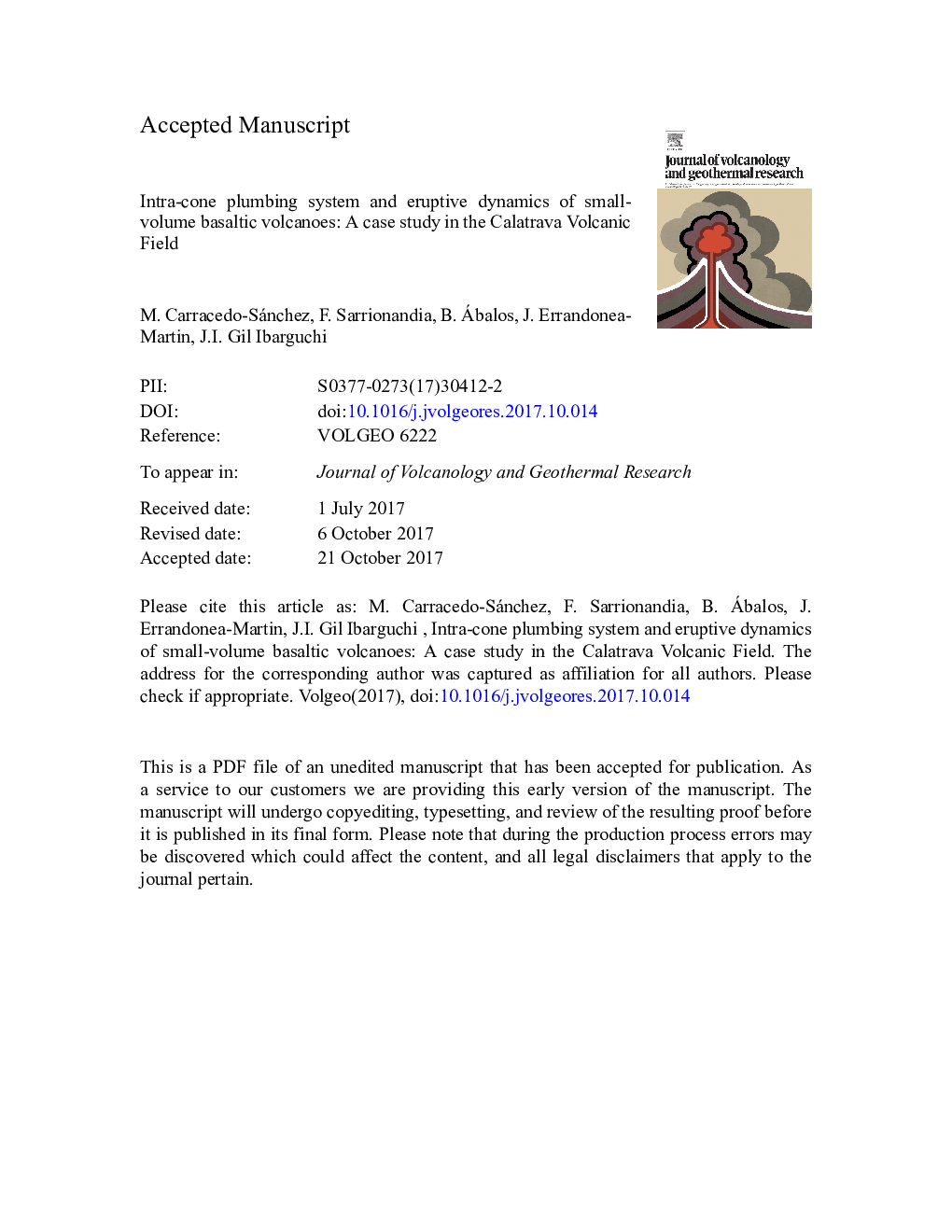| کد مقاله | کد نشریه | سال انتشار | مقاله انگلیسی | نسخه تمام متن |
|---|---|---|---|---|
| 8911447 | 1638275 | 2017 | 53 صفحه PDF | دانلود رایگان |
عنوان انگلیسی مقاله ISI
Intra-cone plumbing system and eruptive dynamics of small-volume basaltic volcanoes: A case study in the Calatrava Volcanic Field
ترجمه فارسی عنوان
سیستم لوله کشی درون مخروطی و پویایی فوران آتشفشان های بازالتیک کوچک: یک مطالعه موردی در منطقه آتشفشانی کالاتراوا
دانلود مقاله + سفارش ترجمه
دانلود مقاله ISI انگلیسی
رایگان برای ایرانیان
کلمات کلیدی
موضوعات مرتبط
مهندسی و علوم پایه
علوم زمین و سیارات
ژئوشیمی و پترولوژی
چکیده انگلیسی
The Manoteras volcano (Tortonian to Pleistocene, Calatrava Volcanic Field, Spain) is composed of a scoria and spatter cone surrounded by a field of pahoehoe lava. The volcanic cone is made essentially of vitreous lapilli-tuffs with intercalations of vitreous tuffs and spatter deposits, without any intercalations of lava flows. Erosion has uncovered an intra-cone plumbing system formed by coherent dykes and pyroclastic dykes (mixed-type dykes). This dyke swarm reflects processes of intrusion at the end of the eruption or even post-eruption. All the volcanic products are nephelinitic in composition. The main dyke is up to 3.4Â m thick and has an exposed length of ~Â 1000Â m. It is composed mostly of coherent nephelinite with some pyroclastic sections at its northern extremity. This dyke is regarded as a feeder dyke of the volcano, although the upper parts of the dike have been eroded, which prevents the observation of the characteristics and nature of the possible overlying vent(s). Mixed-type dykes could also have acted as small linear vents and indicate that the magma fragmentation level during final waning stages of the eruption was located inside the volcanic cone. The pyroclastic deposits that make up the volcanic cone at the current exposure level were probably developed during a major phase of violent Strombolian style that formed the scoria cone, followed by a Hawaiian phase that formed the summital intracrater spatter deposit. Three central-type vents have been identified: one at the highest point of the remnant volcanic cone (summital vent), from where the earlier explosive eruptions took place, and the other two at the fringe of the cone base, from where emissions were only effusive. The lava flows were emitted from these boccas through the scoria cone feeding the lava field. The results obtained, based on careful field observations, add substantial complexity to the proposed eruptive models for small-volume basaltic volcanoes as it appears evident that there may exist and evolution through time from central conduit settings to fissure eruptions. Moreover, it is shown that intracone plumbing systems can integrate coherent and clastic dykes of variable thicknesses, which, in some cases could represent feeder dykes.
ناشر
Database: Elsevier - ScienceDirect (ساینس دایرکت)
Journal: Journal of Volcanology and Geothermal Research - Volume 348, 15 December 2017, Pages 82-95
Journal: Journal of Volcanology and Geothermal Research - Volume 348, 15 December 2017, Pages 82-95
نویسندگان
M. Carracedo-Sánchez, F. Sarrionandia, B. Ábalos, J. Errandonea-Martin, J.I. Gil Ibarguchi,
